A Synthetic lightsaber crystal, commonly referred to as a Synth-crystal, was a type of lightsaber crystal that was artificially created, rather than naturally formed by geological processes. Due to the methods used in their creation, they were often formed with a red coloration, though they could be made with any color through special manipulations of either the creation process or the crystal itself, often through the Force, such as the green synth-crystal that powered Luke Skywalker's second lightsaber.
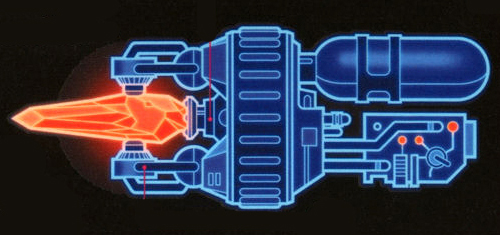
The red-hued synth-crystal powering Darth Vader's lightsaber.
Though synthetic crystals were ordinarily unsuitable for use in lightsabers, the Sith discovered that they could create synth-crystals that were energized, magnetized, and modified with the power of the dark side of the Force in special furnaces, causing the crystal to glow in harmonic vibration. As a result of their artificial origins, synthetic crystals created more powerful lightsaber blades and could be more easily augmented. Also, their common usage by Sith and other Darksiders after this discovery caused synthetic crystals to become something of a staple among such groups, and their use among Jedi was strongly discouraged.
Most synthetic crystals were red, a result of the forging process, and often times the initiate's intentional manipulations, as most individuals who utilized synthetic crystals were Darksiders. The red-hued lightsaber blades generated by such crystals were often nicknamed "bloodshine blades". The crystal's ability to change to reflect the intentions of the creator could be said to foster a stronger bond between the resulting lightsaber and the wielder. However, synth-crystals could be made in any color, requiring only slight adjustments of the creation process and special manipulations through the Force during the forging.
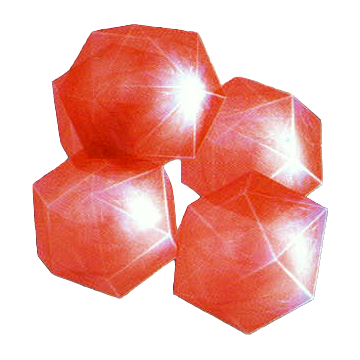
A batch of synthetic crystals
Synthetic lightsaber crystals were manufactured within a machine known as a geological compressor. The original purpose of the compressor was to replicate geological conditions on distant worlds in a laboratory setting, and it was easily adapted for creating synth-crystals; simply replicating the geological processes that create crystals. The raw materials that the crystal was fashioned from were easily accessible, simply being minerals with a high carbon concentration. The raw minerals would be placed within the machine and essentially left to bake for a period ranging from twenty-four hours to four days, during which time, the initiate creating the crystal would meditate on it with the Force, guiding the formation and increasing the potency. This level of control over the formation process allowed initiates to create crystals that best suited their needs.
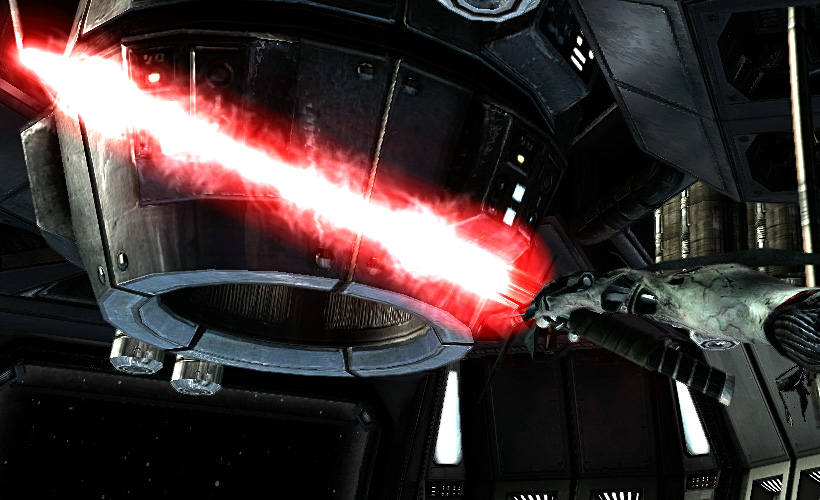
A Sith lightsaber with a blade generated by an unstable synth-crystal.
In addition to the numerous colors synthetic crystals could be fabricated in, there were also variations in the crystals themselves that affected how they focused lightsabers blades.
Standard
A standard synthetic crystal was created through the successful replication of the geological structure of natural crystals. Standard crystals set the baseline for synthetic crystals in general; they generated a more powerful lightsaber blade than natural crystals, and often demonstrated a red coloration, though that was easily controlled. In fact, synth-crystal blades were so powerful that they had the rare potential to "break the blade" of a standard lightsaber by overloading the energy matrix and instantly burning out the other lightsaber. Though this happened extremely rarely, it was a known and frightening possibility in combat.
However, synth-crystal-generated lightsaber blades were generally less manoeuvrable than the blades generated by natural crystals, and were generally more unstable.
Compressed
Compressed synth-crystals were a result of a failure to accurately replicate the natural geological process that formed crystals. The result was a crystal that was far more compressed than natural crystals, causing the blade generated to be considerably thinner than standard blades. However, a byproduct of this thinner blade was that it allowed for greater precision and control. In addition to a thinner blade, the other visual indicators for a blade generated by a compressed synth-crystal were oscillations of energy that rapidly ran along the length of the blade at regular intervals.
Unstable
Like compressed crystals, unstable crystals were the result of the initiate failing to accurately replicate the natural formation processes of crystals. The blades generated by unstable crystals were obviously more unstable than the norm, causing the blades generated to crackle with energy at erratic intervals, sometimes causing sparks to fly or streaks of electrical energy to run along the length. Due to the energy sparking from the blade, unstable synth-crystals caused more damage than normal when they hit enemies. However, they were much more prone to shorting out, causing the lightsaber to deactivate for a time.
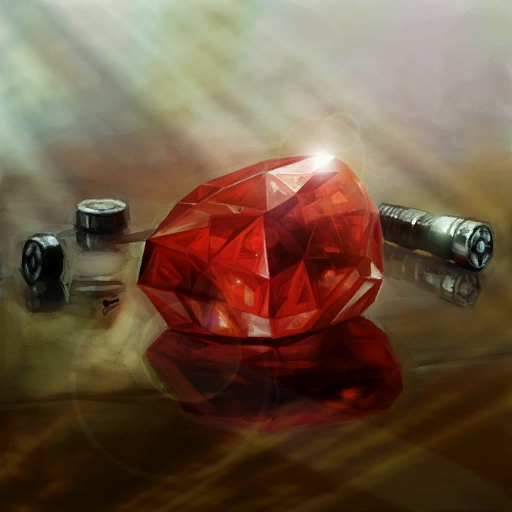
A synthetic crystal
It is unknown when the Sith and other Dark side groups began using synthetic crystals, though red crystals have been in use since the days of the Old Sith Empire, with notables such as Karness Muur and his followers wielding such weapons. However, at the time, most Sith wielded Sith swords rather than lightsabers, though red lightsabers would become the standard weapon after the reformation of the Empire.
The first Sith-follower to take up a red-bladed weapon before the resurgence of the old Empire was the Dark Jedi Haazen, as the previous Dark Lord in power; Exar Kun; and his followers simply continued using their Jedi lightsabers in combat. Darths Revan and Malak followed suit when they rose to power, making the usage of red-crystals widespread among their Sith followers. Due to their common use within Revan's Sith Empire, red-hued crystals were marked as the staple of Darksiders.
The primary reason for the usage of synthetic crystals among Sith and other Darksiders was the need to stay hidden, as most of the sites where natural crystals suitable for lightsabers could be gathered were frequented by the Jedi Order. Eventually, synth-crystal usage among such groups became a tradition, with most members considering the creation of a synthetic crystal superior to the more passive Jedi method of gathering of natural formations, which was looked on as relying on the "untamed wilds of space" to provide. In fact, synthetic crystal creation was viewed by Darksiders to be a sign of greater mastery over the Force.
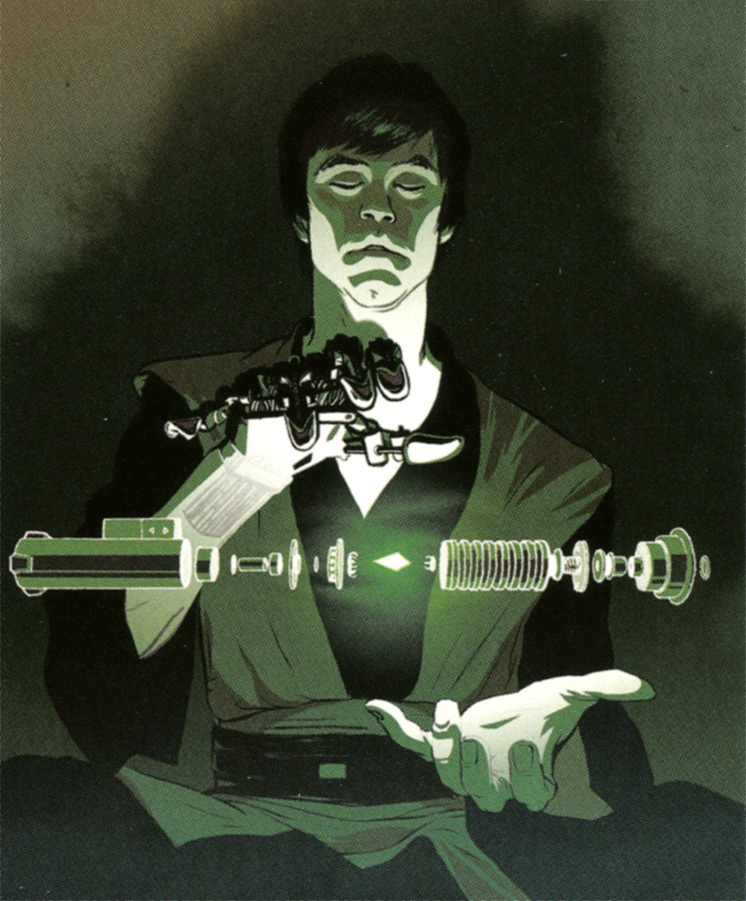
Luke Skywalker's green synthetic crystal.
Conversely, the Jedi frowned on the creation and use of synth-crystals among their initiates, associating this with taking the quick and easy path, as they believed they should rely on crystals found naturally. However, sometimes Jedi were forced to create synth-crystals when a weapon was needed and no naturally occurring crystals were accessible. Notable examples include Luke Skywalker, who used a synth-crystal for his first lightsaber, because he had no knowledge of the natural crystals at that point, and his niece Jaina Solo. Synth-crystals made by the Jedi usually had colors other than red, to avoid similarities with the Sith. Skywalker created a green crystal, while Solo produced a violet one.
In fact, because Darth Sidious had most of the sites where crystals occurred naturally looted or destroyed during the reign of the Galactic Empire, the New Jedi Order had to rely on synth-crystals almost exclusively.
The Imperial Knights crafted their lightsabers that featured synthetic crystals, using knowledge from Sidious' Book of Anger, in a process bereft of ceremony or significance. To an Imperial Knight, a lightsaber was merely a tool, and their training devoted as much attention to fighting in vehicles, bare-handed, and with the Force. The blades of these lightsabers were uniformly a silver-white color.
Not all red lightsaber crystals were synthetic. Adegan crystals featuring a red coloration were not unheard of, Darth Vader utilizing such a crystal in one of his lightsabers, and red-hued crystals were known to form naturally in the Crystal Cave on Dantooine, along with blue, green, yellow and violet crystals. However, unlike the other crystals, the red crystals from Dantooine were typically found in unhatched kinrath eggs.

Luke Skywalker's miscolored lightsaber.
As lightsaber crystals didn't make their appearance in Star Wars mythos until later, the color difference between Jedi and Sith lightsabers was originally thought to reflect the personality of the wielder. This erroneous viewpoint was even supported by the comic book adaptation of Return of the Jedi, which depicted Luke Skywalker's lightsaber emitting a red blade when Vader ignited it.
While the idea that lightsaber blade colors reflected the personality of the wielders was eventually corrected, red crystals weren't actually established to be synthetic in nature until the release of Star Wars Insider 62 in 2002, though the existence of synth-crystals was established in the Expanded Universe novel Shadows of the Empire, though they were not referred to as such.
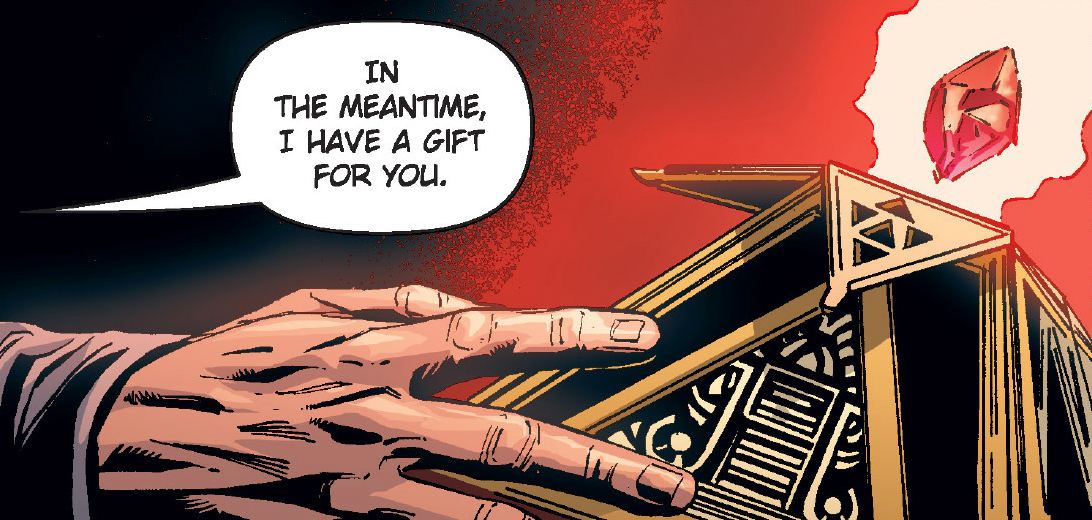
Darth Andeddu's red synth-crystal.
- Star Wars: Attack of the Clones: The Visual Dictionary
- "Fightsaber: Jedi Lightsaber Combat" — Star Wars Insider 62
- † Star Wars: The Official Figurine Collection
- † The Official Star Wars Fact Files
- Star Wars: Revenge of the Sith: The Visual Dictionary
- Star Wars: Complete Locations
- Star Wars: The Complete Visual Dictionary
- Jedi vs. Sith: The Essential Guide to the Force
- Star Wars Fandex Deluxe Edition
- Jedi Academy Training Manual
- Book of Sith: Secrets from the Dark Side
- Star Wars: Beware the Sith
- Star Wars: Sith Wars